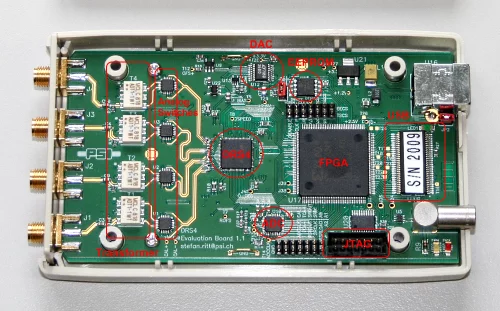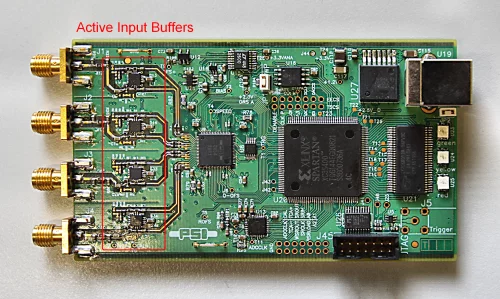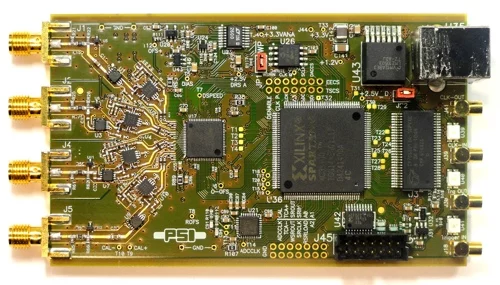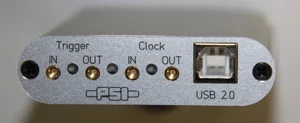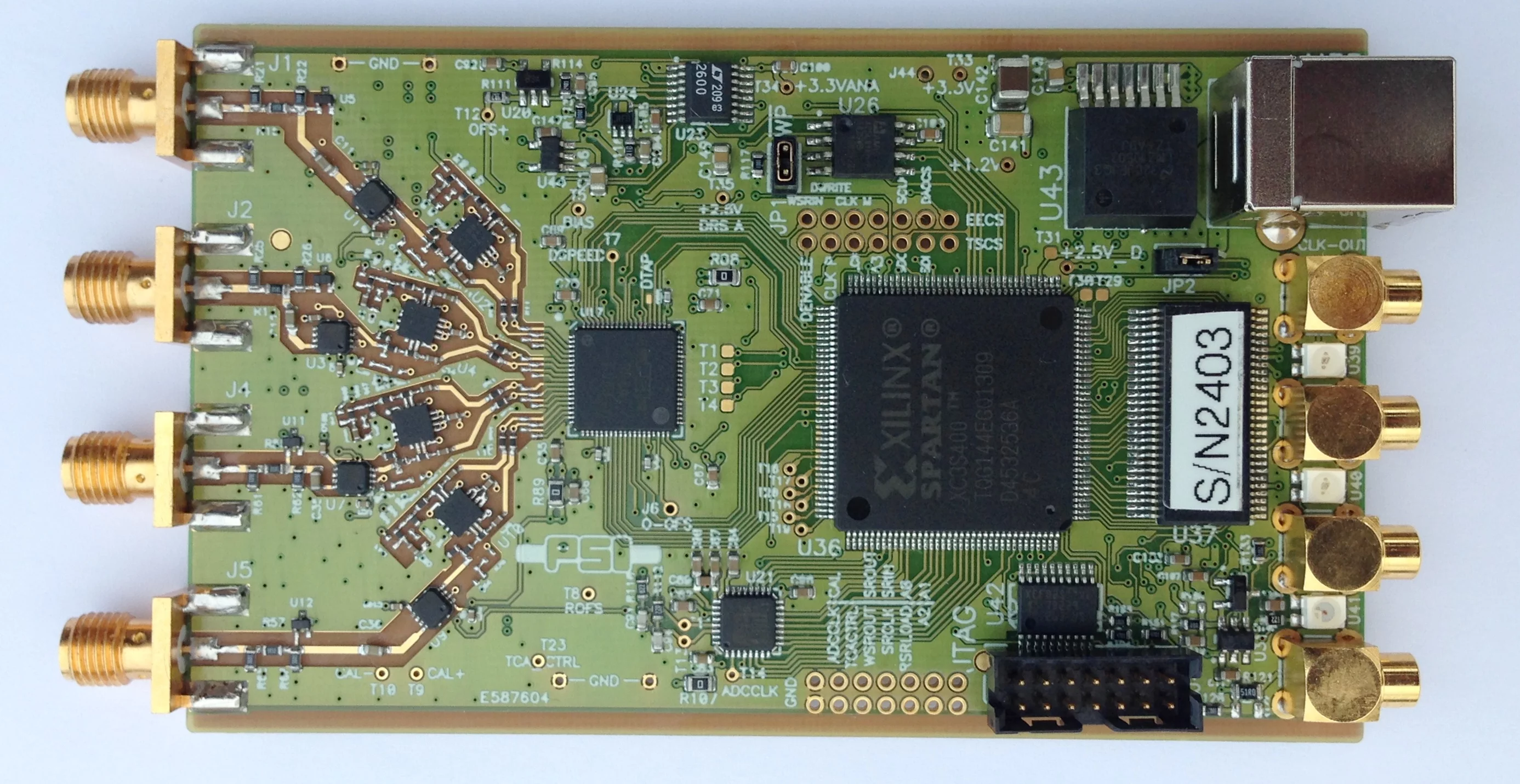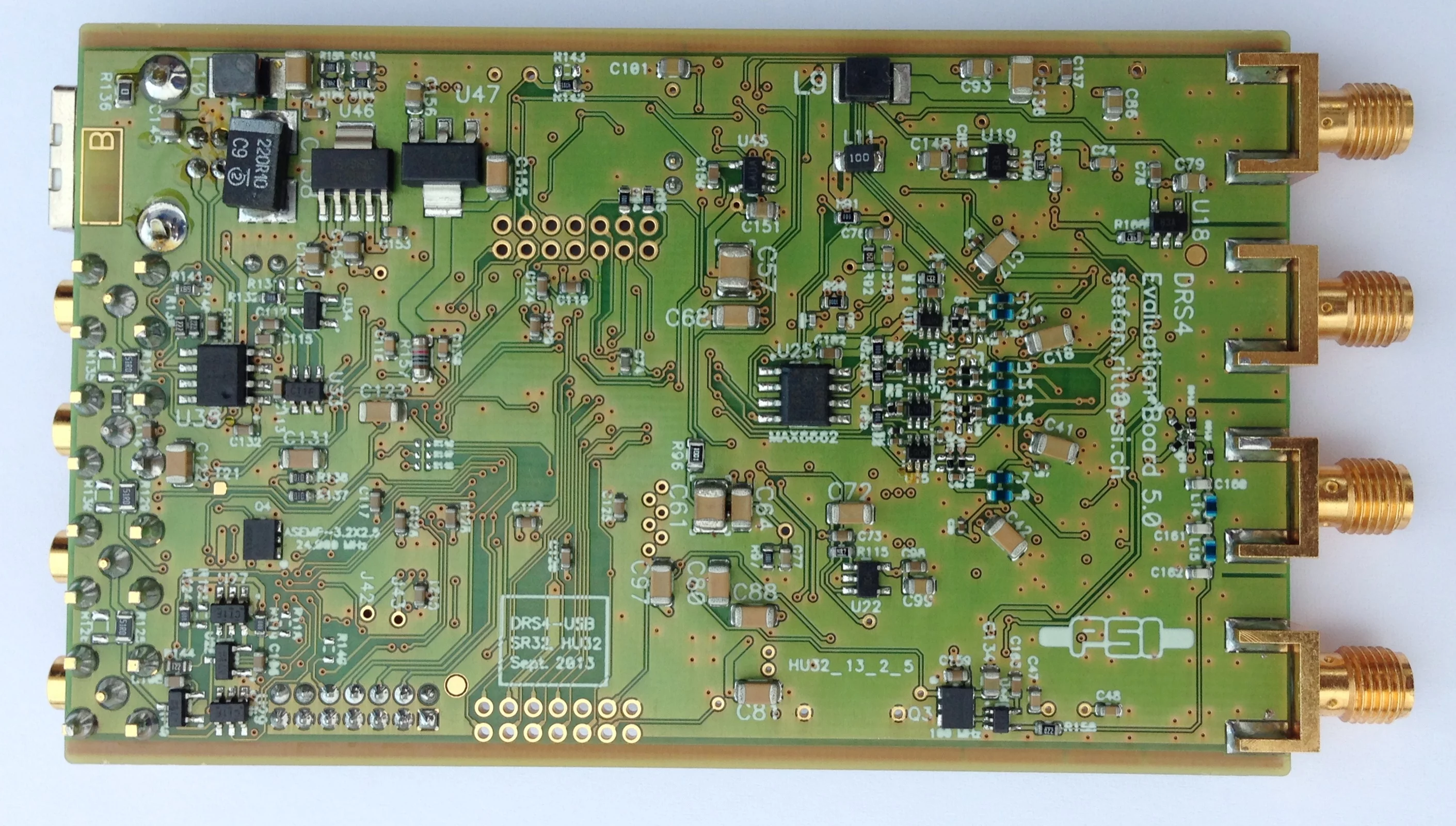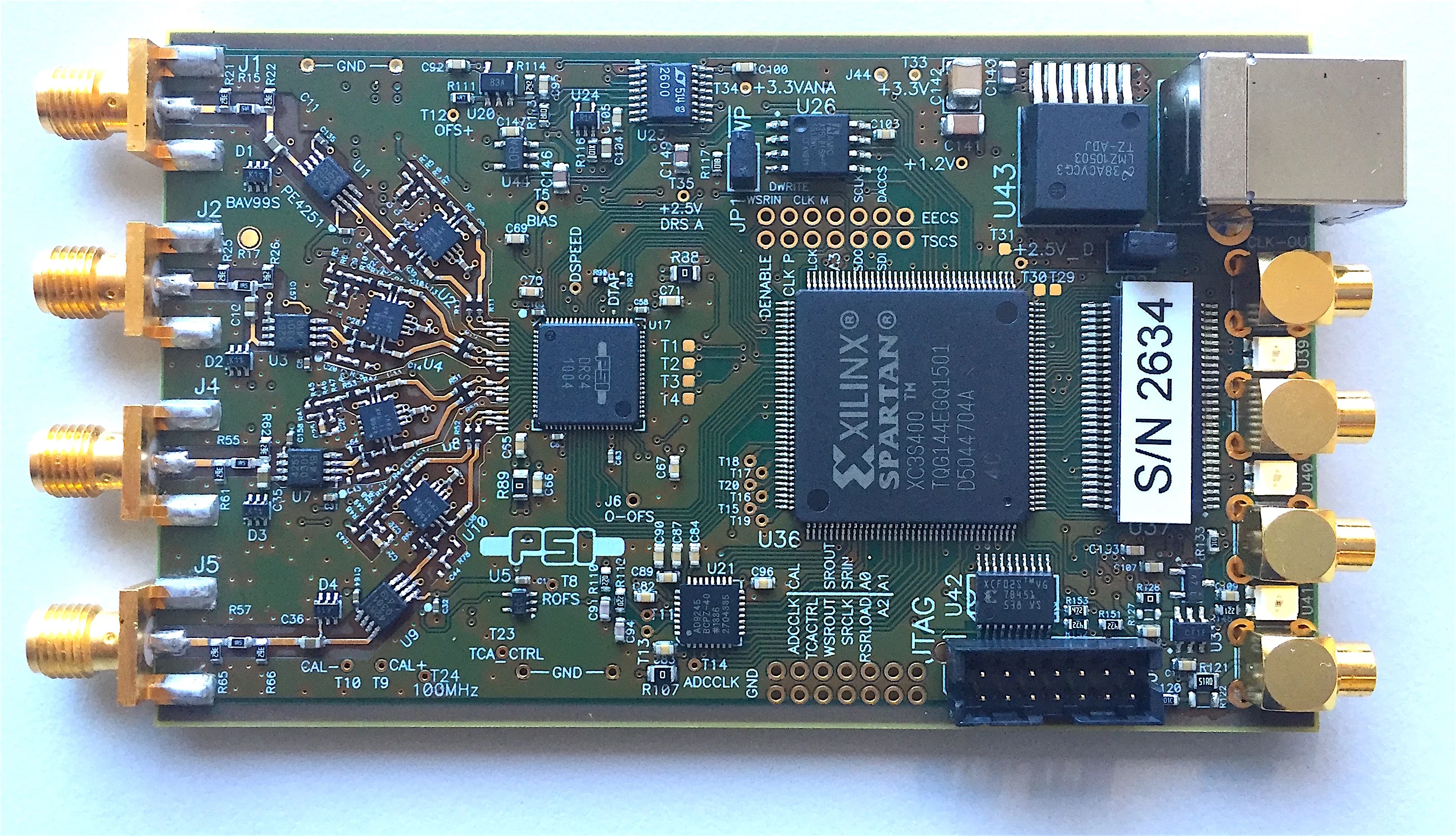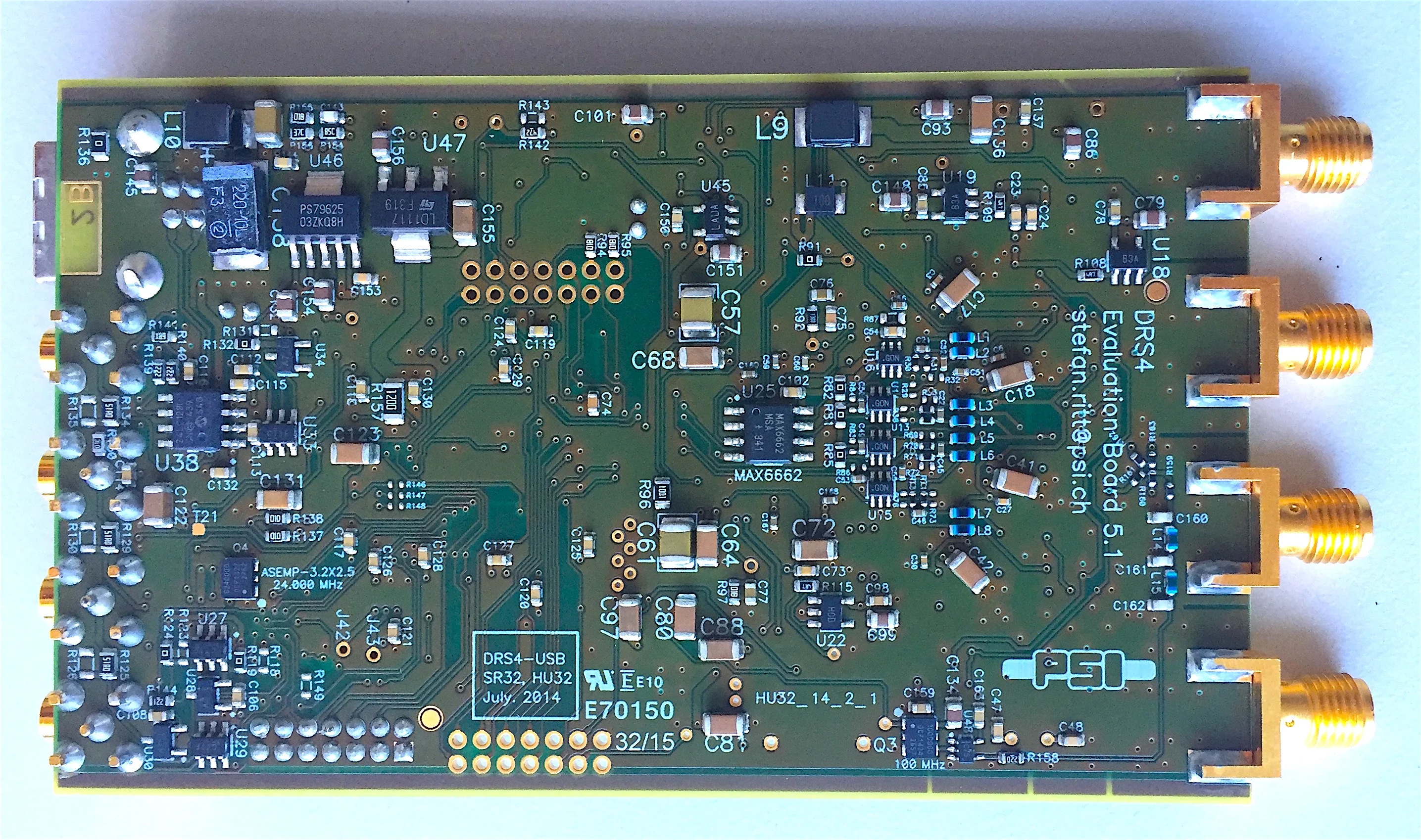DRS4 Evaluation Board V2
Before 2010, we shipped the evaluation board version 2. This board had passive input transformers, which limited the bandwidth to about 500 MHz. This board is not supported any longer in the current software release.
DRS4 Evaluation Board V3
From August 2010 to late 2011, we shipped a revised evaluation board. This board is identical to the previous board, except that it contains active input buffers instead of the passive transformers. The power consumption of this board is therefore higher, but it can still be powered from the USB port. The advantage is that the analog bandwidth of this board is now 700 MHz (-3dB), so signal rise times below 1ns can be captured correctly. Since the bandwidth is higher, the noise is also a bit higher (0.45 mV RMS instead 0.32 mV for the evaluation board V2). Please note that software revision 3.0.0 or later must be used in conjunction with this board to operate correctly.
The evaluation board V3 is no longer shipped any more.
DRS4 Evaluation Board V4
Starting late 2011 until end of 2013, we shipped the evaluation baord V4. This board is identical to the V3 baord, but it contains few minor improvements. The layout of the input buffers has been changed, so that all four channels show about the same bandwidth of 750 MHz. Each channel has now it's own discriminator (rather than one common discriminator and a multiplexer as on the V3 board) which allows complex logic triggers like coincidences or vetos between channels. The most visible modification are the four external connectors, two for trigger input/output and two for clock input/output. The Trigger IN has the same functionality as on the previous boards. The clock connectors can be used so synchronize several boards in a small DAQ system. The Trigger OUT signal can be used to allow self-triggering in a multi-board environment. If several boards via an USB hub to a PC, all boards can be read out together, being triggered from the first board in the chain (master). This allows building small multi-board DAQ systems.
DRS4 Evaluation Board V5
Starting in 2014 until October 2014, we shipped the evaluation board V5. In a collaboration with the University of Tübingen (D. Stricker-Shaver) a new method for timing calibration has been established. It was found that each channel needs its own calibration in order to reach resolutions down to a few pico seconds. The V5 board now has a high precision clock which can be connected to all input channels simultaneously for timing calibration. The external trigger and clock connectors have been changed from the MMCX standard to the MCX standard because they are easier to handle.
DRS4 Evaluation Board V5, Revision 1
Starting November 2014, we ship the evaluation board V5, Revision 1. This board is equivalent to the V5 board, except that we use different analog switches at the input stages have a better over-voltage protection. In the past we had cases that large input pulses at the input could destroy the board. This should be now much better with the Revision 1 board. From the software point of view, V5.1 and V5 are identical. Therefore we still label the new boards V5 on the outside of the box.


